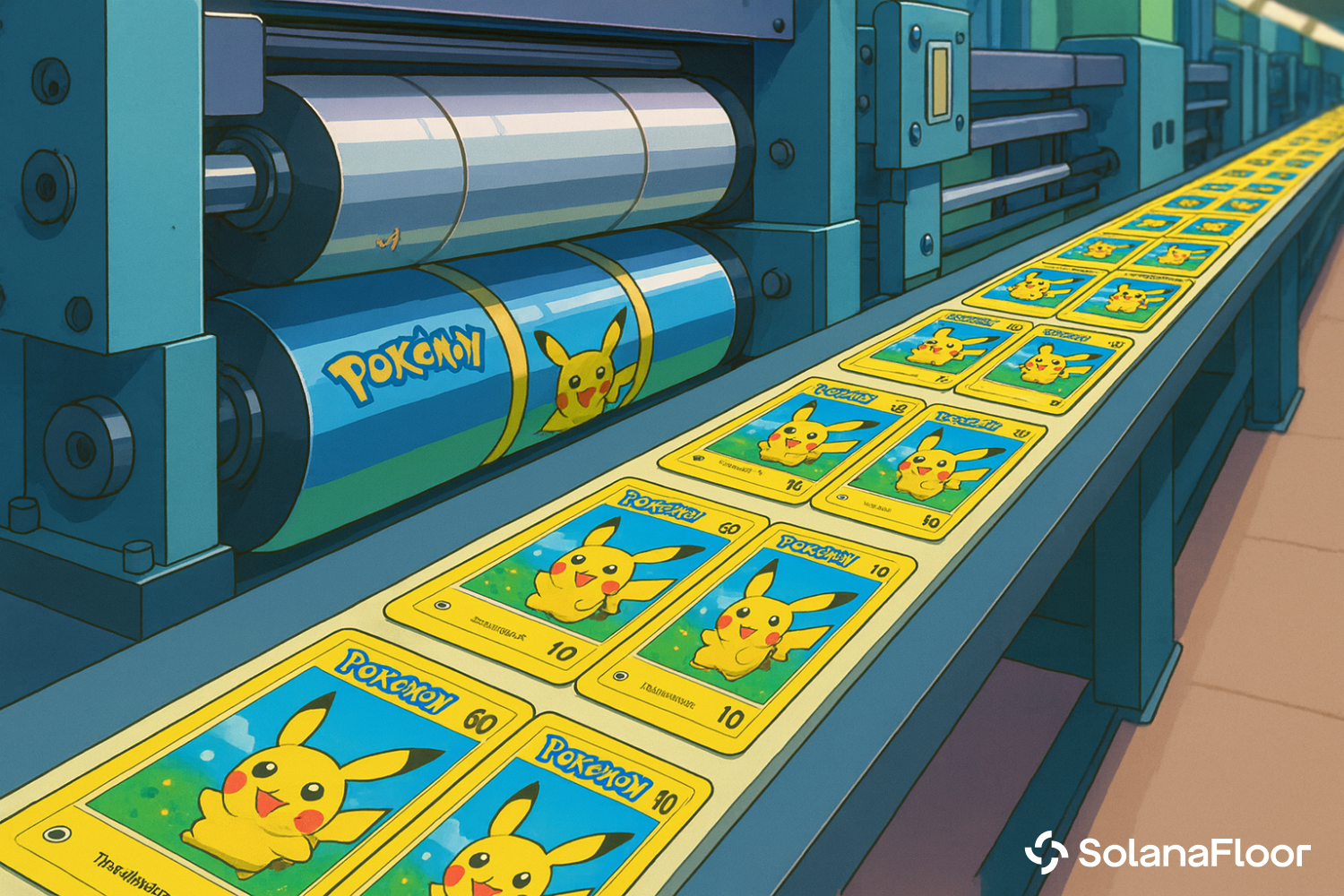
When the phrase “Real-World Assets” is mentioned, one’s mind may drift to real estate, commodities, or maybe even stocks. The phrase rarely conjures images of colorful animated characters with special powers. However, for thousands of onchain Pokémon card collectors, this is precisely the meaning it has taken on.
Over the past few months, Solana has seen an unexpected boom in onchain Trading Card Game (TCG) marketplaces. Platforms like Collector Crypt, Phygitals, and Emporium dominated discussions, with record-breaking gacha spending and player engagement. Initially, this wave appeared unstoppable, even surpassing NFT trading volumes on the network.
At its September peak, TCG weekly trading volume reached $44.7 million, more than 630 percent higher than NFT weekly trading volume at $6.1 million. Although activity has since cooled, the latest data show TCGs still outpacing NFTs, with last week’s $3.1 million in TCG trading volume standing about 247 percent higher than the $888,921 seen in NFTs. This dominance highlights that while momentum has slowed, TCGs continue to command greater engagement than NFTs on Solana.
Breaking Down the Numbers
According to SolanaFloor Data Analytics, Collector Crypt remains the market leader, generating $17.9 million in total revenue and $138.4 million in total gacha spending. Phygitals follows with $8.2 million in revenue and $53.4 million in spending, while Emporium trails far behind with just $125,443 in revenue and $1.16 million in spending.
In terms of engagement, the total number of gacha purchases tells a slightly different story. Phygitals leads with over 4.28 million purchases, compared to 1.9 million on Collector Crypt and just under 20,000 on Emporium. This divergence highlights how Phygitals attracts more frequent, lower-value interactions, while Collector Crypt relies heavily on high-spending users.
A Market Driven by Whales
The gacha spending per wallet metric reinforces this contrast. On average, wallets on Collector Crypt have spent $18,446, compared to $1,575 on Phygitals and $3,670 on Emporium. Collector Crypt’s figures indicate a strong concentration of high-value participants driving total revenue. Meanwhile, Phygitals exhibits a more retail-driven profile, suggesting a broader but shallower user base.
These dynamics echo earlier phases of onchain trends, where high-volume activity masked an uneven distribution of spending power. In practice, this means that, although total volumes remain high, the overall health of the ecosystem may depend on whether retail engagement can sustain long-term liquidity as large holders slow their activity.
Signs of a Plateau
While the cumulative numbers appear impressive, Solana’s TCG sector growth rate is slowing. Recent weeks have seen a flattening in revenue and transaction volumes, indicating that the initial hype may be cooling. Data shows that spending levels that once practically doubled week over week have started to stabilize. The sheer scale of total gacha spending across all platforms, now exceeding $193 million combined, highlights the sector’s rapid growth but also a sharp slowdown in recent weeks. Weekly gacha spending peaked at $23.7 million and has since declined to $1.61 million, a drop of roughly 93 percent. Such a steep pullback raises questions about whether the market can continue expanding at the same pace.
Part of this moderation likely stems from changing sentiment across speculative sectors. As traders rotate into new narratives, attention toward onchain TCGs has softened. The absence of significant new product releases or token catalysts has also contributed to a quieter market.
Has the Meta Peaked?
Volumes remain strong relative to traditional NFT trading, and the top platform continues to generate meaningful revenue. However, declining activity suggests that the Pokémon TCG meta has reached its saturation point for now.
The TCG trend also fits within a broader movement toward exotic real-world assets (RWAs). By tokenizing collectibles such as trading cards, these projects merge nostalgic fandom with onchain liquidity. However, as enthusiasm cools, the sector will need to prove its staying power beyond speculation. Platforms must foster actual utility and secondary markets that can sustain user engagement after the initial wave of interest.
Whether the trend can regain momentum will depend on innovation within the ecosystem. Features such as TCG lending, card collateralization, or real-world integration could re-ignite interest, but without these catalysts, the sector risks losing visibility to newer, faster-moving onchain trends.
A Market at a Crossroads
The Pokémon-inspired TCG meta on Solana remains one of the most fascinating experiments in the digital collectibles space. However, sustaining this momentum will require more than nostalgia and excitement around pack openings.
As onchain data reveals, the market has reached a critical point. Overall activity suggests that the boom phase is over and the market now faces a test of retention rather than raw expansion.
For now, the Solana TCG ecosystem stands as both a testament to the power of community-driven speculation and a reminder of how quickly crypto trends can shift.
Read More on SolanaFloor
io.net Crosses $20 Million in Total Network Earnings
MetaDAO, Metaplex Genesis Lead Solana ICO Boom
Is This Crypto’s Best Gaming Device?



